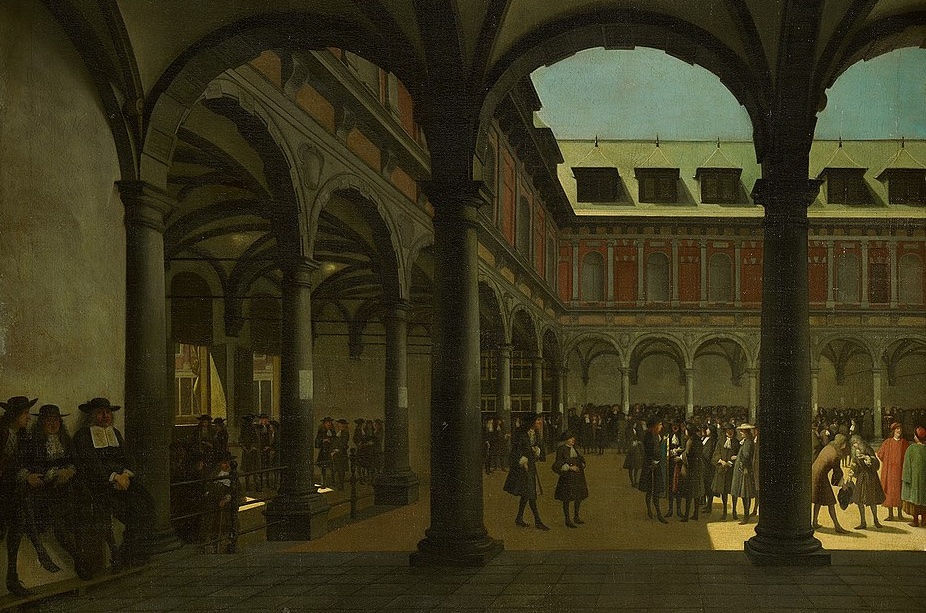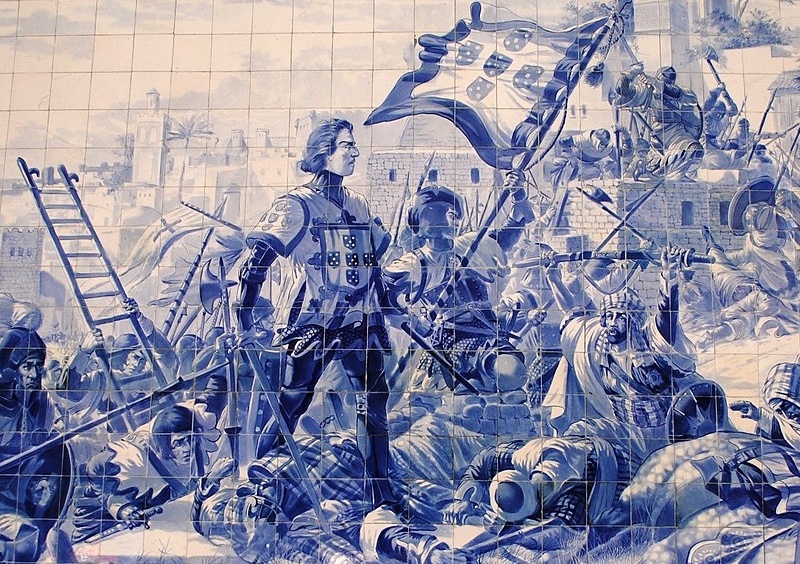The above painting is of the headquarters of the Dutch East India Company (VOC), estd. 1602. The painting is from later in the 1600s.
In the earliest phases of the West Europeans’ construction of transoceanic
empires, from 1415 CE through the early 1500s, well-armed Portuguese and
Spanish flotillas would use the height and maneuverability of their ships and
the firepower of their cannons to overcome Indigenous populations and then
either outright rob them of their crops and possessions, or force them on pain
of torture, death, or enslavement to trade those items on highly coercive
terms.
The earliest of those contacts were, as we saw here, “hit and run” raids. But soon, the plunderers saw the advantages of maintaining more permanent garrisons to control the Indigenes and extract and exploit their resources. Those coastal garrisons then grew into the remarkably durable, trans-oceanic settler-colonial empires that plunderers from the west coast of Europe established and maintained on every continent except Antarctica between the 16th and 18th centuries CE.
The early Portuguese empire-builders had pioneered the (neo-Viking) model of organizing a multi-nodal, trans-oceanic plunder network, which they did down the coast of West Africa. Then, in the 16th century it was the Spanish who pioneered the model of a more durable settler colonialism, which they did initially in the Caribbean and the Americas. (Later, the Portuguese, seeing the profitability of this model, tried to institute something like it in Brazil.)
The Casa de Contratación (House of Trade) that the Spanish monarchs established for this purpose assigned exclusive control over vast tracts of land in the “New World”— including all the human and non-human resources therein—to conquistadores who were favorites of the king, under a system called the encomienda. That system had been perfected over some centuries within Iberia itself, as the Christian lords of Castile and Aragon seized—or, as they claimed, “reconquered”— successive tracts of land from their former Muslim rulers. It was then transferred with few changes, but on a far larger and more lucrative scale, to “New Spain” and “New Granada” in Central America…
Continue reading “History of the West’s domination of the world, Ep. 2 (through 1776)”


